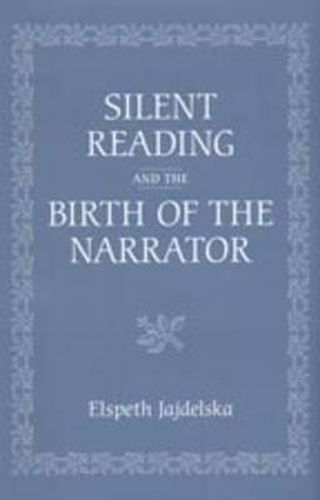Readings Newsletter
Become a Readings Member to make your shopping experience even easier.
Sign in or sign up for free!
You’re not far away from qualifying for FREE standard shipping within Australia
You’ve qualified for FREE standard shipping within Australia
The cart is loading…






Although there is abundant evidence that silent reading existed in antiquity, the question remains as to when it became widespread. Silent Reading and the Birth of the Narrator asserts that, due to a rise in the late-seventeenth and early-eighteenth centuries in the number of parents who could afford to let their children read freely, widely, and for prolonged periods, an entire generation grew into fluent, silent readers in the later 1700s. At that point in time, the reader ceased to be a mouthpiece of the writer, becoming instead a silent hearer of an imagined writer’s words.
Elspeth Jajdelska uses historical, linguistic, and literary evidence to discuss the reorientation of the text and reader towards one another. She specifically investigates changes in punctuation, sentence structure, and letter and diary writing in the period to illuminate the emergence of a new prose style and the birth of the narrator. Unique to Jajdelska’s study is the consideration of silent reading as something that explains changes in literary history. She also incorporates new insights on the history of reading, the novel, the diary, and the English language, using rigorous linguistic analysis and evidence drawn from the study of psychology. Based on a wealth of compelling arguments, Silent Reading and the Birth of the Narrator is an important addition to literary studies, eighteenth-century history, and book and print culture.
$9.00 standard shipping within Australia
FREE standard shipping within Australia for orders over $100.00
Express & International shipping calculated at checkout
Although there is abundant evidence that silent reading existed in antiquity, the question remains as to when it became widespread. Silent Reading and the Birth of the Narrator asserts that, due to a rise in the late-seventeenth and early-eighteenth centuries in the number of parents who could afford to let their children read freely, widely, and for prolonged periods, an entire generation grew into fluent, silent readers in the later 1700s. At that point in time, the reader ceased to be a mouthpiece of the writer, becoming instead a silent hearer of an imagined writer’s words.
Elspeth Jajdelska uses historical, linguistic, and literary evidence to discuss the reorientation of the text and reader towards one another. She specifically investigates changes in punctuation, sentence structure, and letter and diary writing in the period to illuminate the emergence of a new prose style and the birth of the narrator. Unique to Jajdelska’s study is the consideration of silent reading as something that explains changes in literary history. She also incorporates new insights on the history of reading, the novel, the diary, and the English language, using rigorous linguistic analysis and evidence drawn from the study of psychology. Based on a wealth of compelling arguments, Silent Reading and the Birth of the Narrator is an important addition to literary studies, eighteenth-century history, and book and print culture.